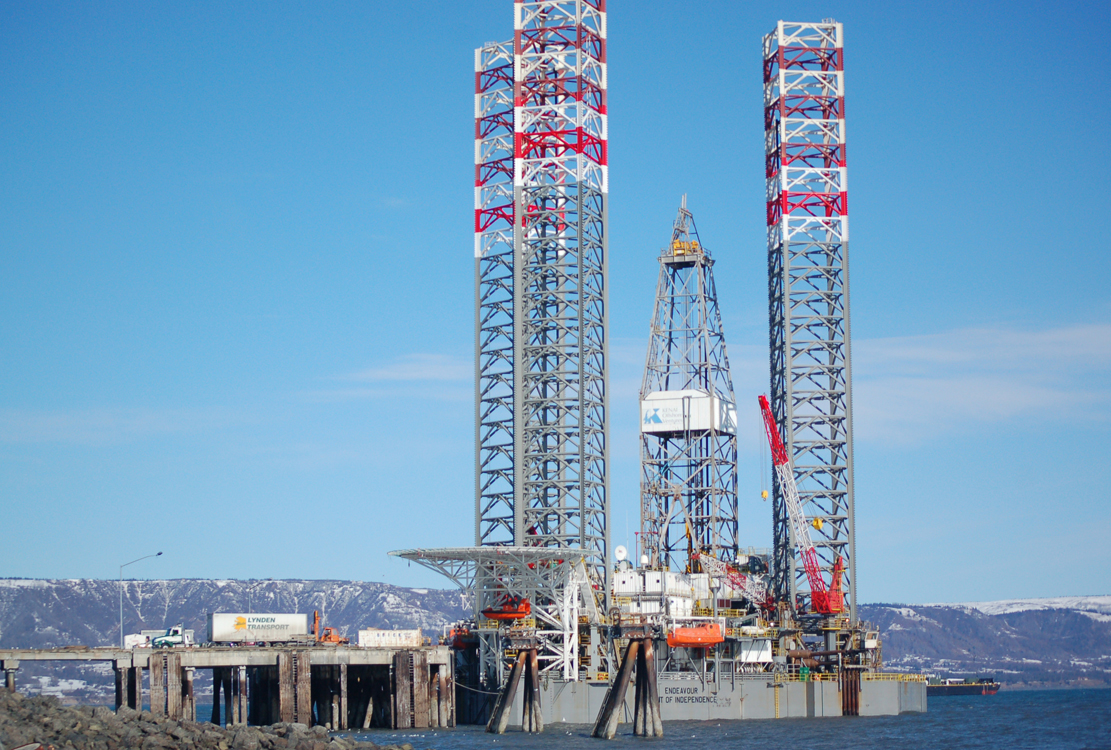Buccaneer Energy, an independent Cook Inlet explorer with high hopes but skimpy resources, saw those hopes come crashing down May 31. The company filed for bankruptcy protection that day in a U.S. Bankruptcy Court in south Texas.
The company has been fighting a rear-guard action on finances almost since the time it arrived in Cook Inlet, bidding on lease sales and then bringing a jack-up rig to the inlet from Asia with a Singapore company and the State of Alaska as partners.
In two filings for Buccaneer Energy Ltd. and Buccaneer Energy Holdings Inc., the company claimed combined assets of $50,000 to $500,000 and liabilities of between $50 million and $100 million.
Buccaneer had also become embroiled in a dispute with Cook Inlet Region Inc., which owns land adjacent to the state land on which Buccaneer’s producing Kenai Loop gas wells are located.
Buccaneer previously had a lease on the CIRI land but the Anchorage-based Alaska Native corporation for Southcentral terminated the lease. Buccaneer sued, claiming the termination was improper, but lost in court.
Meanwhile, CIRI filed a complaint with the Alaska Oil and Gas Conservation Commission, the state agency that regulates industry production practices, that Buccaneer’s Kenai Loop wells were draining gas from its lands.
After two hearings and months of deliberations, the conservation commission decided May 22 to escrow all revenues from gas sales at Kenai Loop until it could sort out how the gas should be shared among Buccaneer, CIRI, the State of Alaska and the Mental Health Land Trust. The escrow account was to be created by June 1, and revenues to be deposited on the 10th day of each month until an allocation was determined under the commission order.
Cut off from its only source of cash income amid its restructuring, Buccaneer had no choice but to file for protection, sources familiar with the company said.
Before the May 22 Kenai Loop decision and the May 31 bankruptcy filing, a lot of other things went wrong for Buccaneer, including a dispute and a lawsuit with its first rig operator, delays in getting the jack-up rig operating, problems siting the rig at an offshore location in the inlet and an expensive dry-hole on the Kenai Peninsula.
There was a second win, however, a potentially major gas discovery at Cosmopolitan, near Anchor Point. In a bittersweet development, though, Buccaneer had to sell its minority interest in the discovery to its partner, and also its share of the jack-up rig, to raise cash.
Through all of this, Buccaneer worked on a long-term refinancing strategy, attracting a potential new partner in Texas.
What made people really take note of Buccaneer initially in Cook Inlet was its discovery of the small Kenai Loop gas field near the city of Kenai and successful production of gas in 18 months from the time the exploration well was drilled, which is light-speed compared with the lengthy permitting and occasional lawsuits that get other companies bogged down.
Ironically, it was Kenai Loop that finally forced the company into bankruptcy after the commission’s decision. The company will now sell most of its assets.
Kenai Loop’s discovery came at a time when the regional utilities were deeply worried about depleted gas fields in Cook Inlet and the possibility that they would have to import gas as liquefied natural gas. Buccaneer showed, with a drill bit, that there was still gas to be found.
Also, the company found new gas just a mile from the long-producing Cannery Loop gas field, formerly owned and operated by a large company, Marathon Oil, which seemed to show that the large companies like Marathon that have long dominated the industry were not aggressively exploring despite the utilities’ worries.
“As part of the Chapter 11 proceedings Buccaneer Energy has also reached an agreement in principle with its secured lender on certain critical elements of a plan of reorganization that would result in the sale of substantially all of the company’s assets,” Buccaneer said in a June 2 press release.
Meanwhile, there are no changes, for now, in production operations. The company has three employees overseeing the Kenai Loop gas wells.
“Buccaneer will continue to operate and oversee its assets during and throughout the restructuring process,” the press release said.
The restructuring should allow Buccaneer to pay off its creditors, but at the expense of its assets.
“The company expects to have sufficient cash on hand throughout the Chapter 11 proceedings to pay all of its post (bankruptcy) petition obligations as they come due,” the press release said.
Tim Bradner is a reporter for the Alaska Journal of Commerce.



